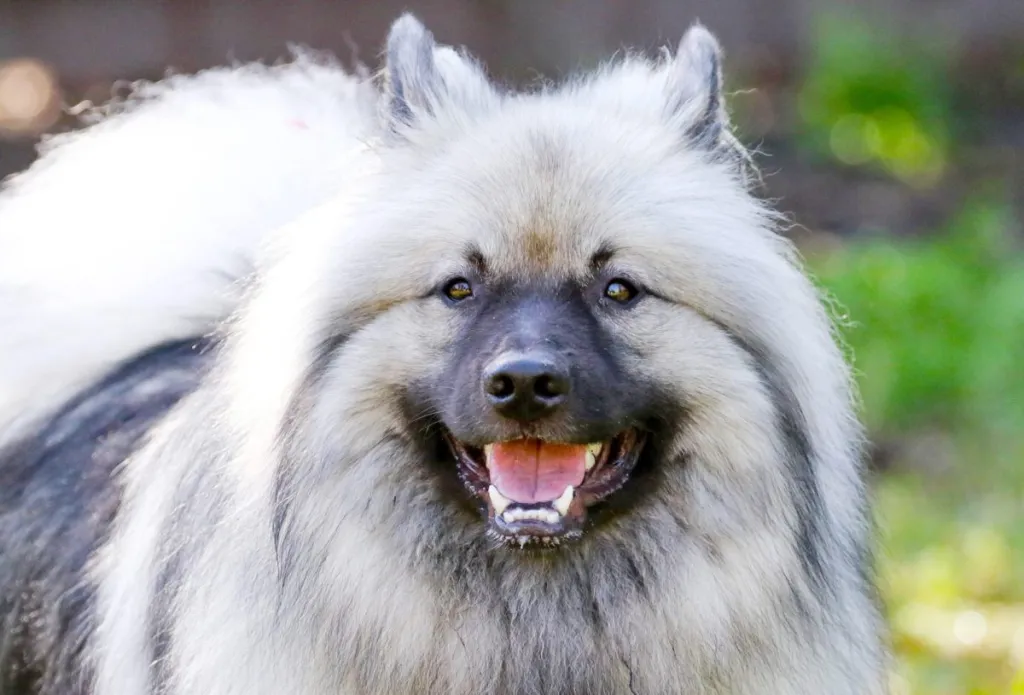Greetings, fellow dog lovers! Join me as we delve into the captivating world of the Keeshond, a breed known for its distinctive “spectacles” and friendly demeanor. From their historical roots to modern-day roles as beloved family pets, let’s explore everything there is to know about this charming Dutch spitz.
Origins and History of the Keeshond
The Keeshond, or “Kees,” traces its ancestry to 18th-century Holland, where it served as a companion and watchdog on barges and farms. Originally named after the Dutch patriot Cornelis (Kees) de Gyselaer, the breed became a symbol of loyalty and companionship during political upheavals in the Netherlands.
Physical Characteristics
Picture a medium-sized dog with a plush double coat, distinctive markings around their eyes resembling glasses, and a plumed tail carried proudly over their back. Keeshonds are known for their expressive faces and a “fox-like” appearance, making them easily recognizable and utterly charming.
Temperament and Personality Traits
Keeshonds are renowned for their friendly and affectionate nature, earning them the nickname “the smiling Dutchman.” They are intelligent, alert, and thrive on human companionship, making them excellent family pets and therapy dogs. Their playful demeanor and loyalty make them wonderful companions for households of all sizes.
Living with a Keeshond: Care and Maintenance
Caring for a Keeshond involves regular grooming to maintain their luxurious coat and prevent matting. They are moderately active dogs that enjoy daily walks and playtime but also appreciate indoor lounging with their families. Proper nutrition, veterinary care, and dental hygiene are crucial for their overall health and well-being.
Training and Socialization
Keeshonds are intelligent and eager to please, but they can also be independent thinkers. Positive reinforcement techniques, consistency, and early socialization are key to shaping their well-mannered behavior and preventing separation anxiety or excessive barking.
Health Considerations
Keeshonds are generally healthy dogs with a lifespan of around 12 to 15 years. However, like all breeds, they may be prone to certain health issues such as hip dysplasia, patellar luxation, and inherited diseases like progressive retinal atrophy (PRA). Regular veterinary check-ups and a balanced diet tailored to their age and activity level can help maintain their health.
Is a Keeshond Right for You?
Considering adding a Keeshond to your family? They thrive in homes where they receive love, attention, and mental stimulation. Their friendly nature and adaptability make them suitable for various living situations, from apartments to suburban homes with fenced yards.
Finding and Adopting a Keeshond
If you’re ready to welcome a Keeshond into your life, consider adoption through reputable breeders or rescue organizations. Ensure any breeder provides health clearances and adheres to responsible breeding practices. Adopting a Keeshond not only gives a loving home to a deserving dog but also enriches your life with their loyalty and affection.
Conclusion
In conclusion, the Keeshond is a delightful breed that embodies loyalty, intelligence, and affection. Whether you’re captivated by their expressive “spectacles,” their cheerful disposition, or their role as devoted companions, the Keeshond brings joy and companionship to countless families worldwide. Understanding their history, care needs, and unique personality traits is essential to fostering a strong bond with your Keeshond. So, if you’re ready for a loyal friend with a heartwarming smile, consider the Keeshond for your next furry family member!
Is Keeshond a good family dog?
Yes, Keeshonds are excellent family dogs known for their friendly and affectionate nature. They are great with children and other pets, making them wonderful companions for families of all sizes.
Are Keeshonds a rare breed?
Keeshonds are not extremely common, but they are not considered rare either. They have a dedicated following among dog enthusiasts who appreciate their distinctive appearance and loyal temperament.
Is Keeshond high maintenance?
Keeshonds have a double coat that requires regular grooming to prevent matting and keep shedding under control. They are moderate in maintenance compared to some breeds, needing brushing several times a week and occasional professional grooming.
Do Keeshonds shed a lot?
Keeshonds do shed, especially during seasonal changes. Their double coat sheds moderately throughout the year, so regular grooming is essential to manage loose hair and keep their coat healthy.
Do Keeshonds bark a lot?
Keeshonds are known to bark, especially in response to stimuli such as strangers approaching or unusual sounds. Early training and socialization can help manage their barking tendencies and teach them appropriate behaviors.
Will a Keeshond protect you?
Keeshonds are alert and will bark to alert their owners of potential threats, but they are not typically guard dogs. They are more likely to greet strangers warmly once properly introduced, rather than showing aggression.
Are Keeshonds aggressive?
Keeshonds are not known to be aggressive dogs. They are generally friendly, affectionate, and well-mannered with proper socialization and training. However, like all dogs, individual temperament can vary, so early socialization is important.
How intelligent is a Keeshond?
Keeshonds are highly intelligent dogs known for their quick learning and problem-solving abilities. They excel in activities that stimulate their minds, such as obedience training and interactive games.
Can Keeshonds be left alone?
Keeshonds do not like to be left alone for long periods and may develop separation anxiety if left without companionship for extended periods. They thrive on human interaction and are happiest when they can be with their family members.
Do Keeshonds have health issues?
Keeshonds are generally healthy dogs, but like all breeds, they can be prone to certain health issues such as hip dysplasia, patellar luxation, and progressive retinal atrophy (PRA). Regular veterinary check-ups and a healthy lifestyle can help mitigate these risks.
- Best Dun & Bradstreet (DNB) Alternatives for 2025 - April 19, 2025
- Best 6sense Alternatives for 2025 - April 18, 2025
- Best Instantly.ai Alternatives for 2025 - April 18, 2025



